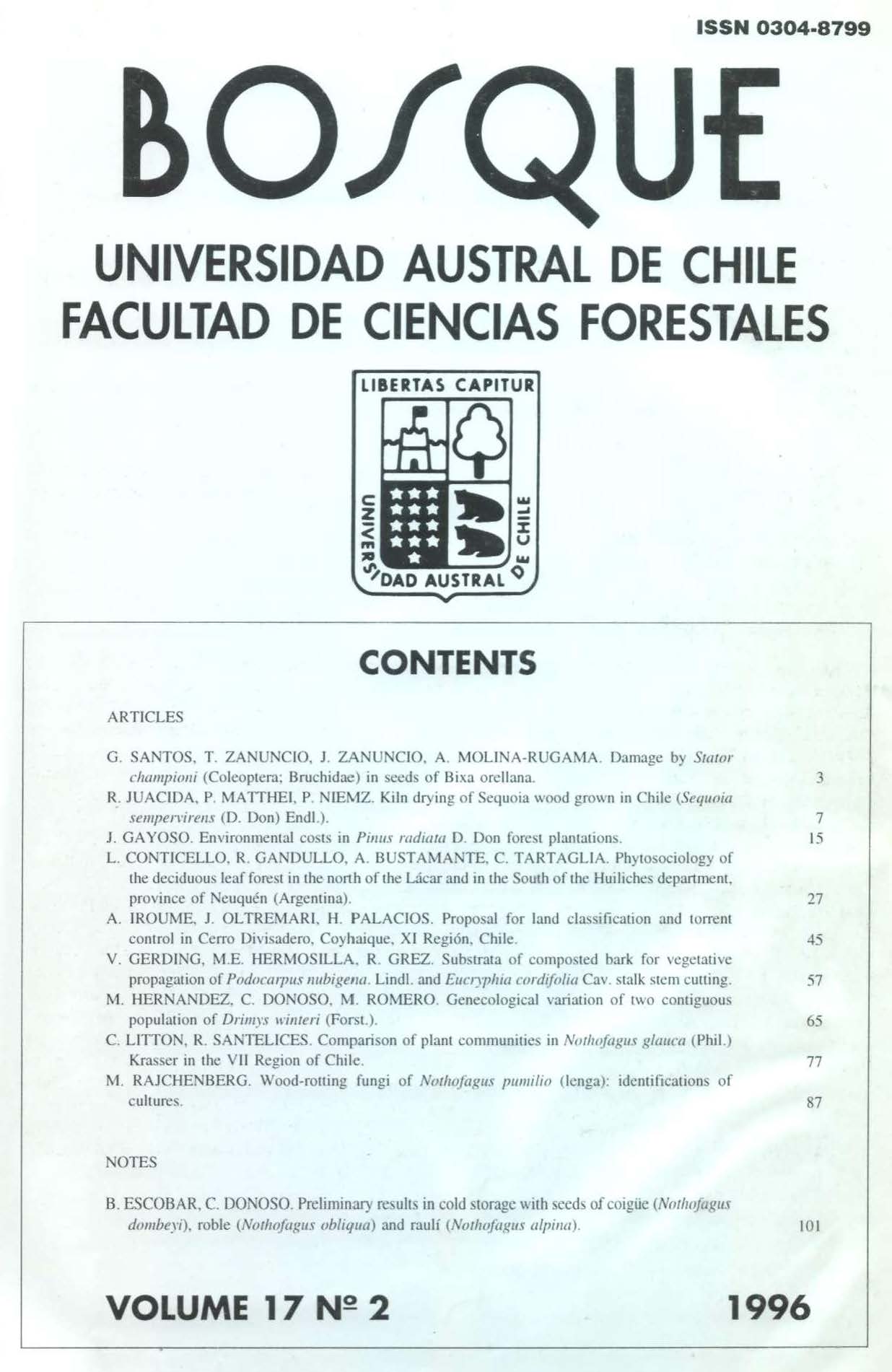Kiln drying of sequoia wood grown in Chile (Sequoia sempervirens (D. Don) Endl.)
Main Article Content
Abstract
A kiln dry essay applying an artificial drying program proposed by Rasmussen (1980) for sawn wood of Sequoia sempervirens (D. Don) Endl. of 25 mm thickness. The effectivenes of the program was evaluated bases on the final moisture contents and the amount and magnitude of defects (such as deformation and cracks) produced during the process. The dimensional variation was also determined.
Timber used for the essays was taken from a patch located at Voipir track, province of Villarrica, IX Region. Seven trees were cut, obtaining a 4 m long log from each one. Timber was sawn with a band saw and cut to scatling of 25 mm x 100 m x 1.1 m at the Technological Institute of Forestry Products at the Universidad Austral de Chile. Essays took place in an experimental dryer at the Faculty of Forestry Sciences.
The program applied to sequoia produced timber of wood quality. The major frequency of deformations corresponded to bow and spring, followed by a low percentage a twist and cup. Spring was the most disqualifying defect. There were no cracks, except for the knots. There was no evidence of collapse. The average initial moisture contents of timber was 127% and the achieved final was 10.6%. Maximum temperature of dry bulb applied was 65.5°C and the duration of the process was 100 hours (including heating, equalizing and conditioning time).

